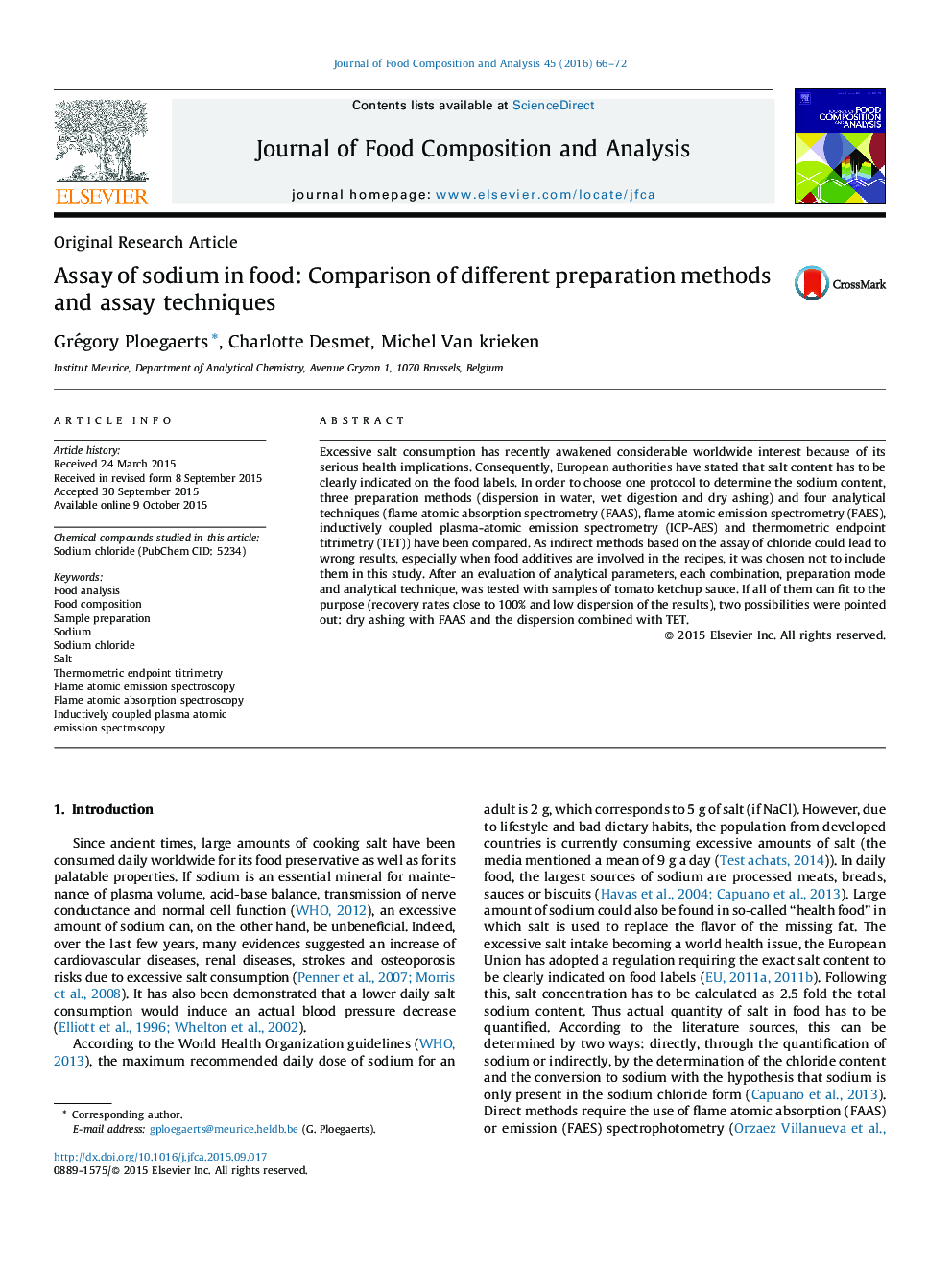| Article ID | Journal | Published Year | Pages | File Type |
|---|---|---|---|---|
| 1218178 | Journal of Food Composition and Analysis | 2016 | 7 Pages |
•We compare 12 different ways to determine sodium content in food.•Merits of four techniques were evaluated in order to select the most efficient.•Merits cannot discriminate any techniques but time consuming and costs well.•It's not necessary to realize more than 6 replicates per series for further studies.•TET promises us to be the most relevant except with low level content.
Excessive salt consumption has recently awakened considerable worldwide interest because of its serious health implications. Consequently, European authorities have stated that salt content has to be clearly indicated on the food labels. In order to choose one protocol to determine the sodium content, three preparation methods (dispersion in water, wet digestion and dry ashing) and four analytical techniques (flame atomic absorption spectrometry (FAAS), flame atomic emission spectrometry (FAES), inductively coupled plasma-atomic emission spectrometry (ICP-AES) and thermometric endpoint titrimetry (TET)) have been compared. As indirect methods based on the assay of chloride could lead to wrong results, especially when food additives are involved in the recipes, it was chosen not to include them in this study. After an evaluation of analytical parameters, each combination, preparation mode and analytical technique, was tested with samples of tomato ketchup sauce. If all of them can fit to the purpose (recovery rates close to 100% and low dispersion of the results), two possibilities were pointed out: dry ashing with FAAS and the dispersion combined with TET.
